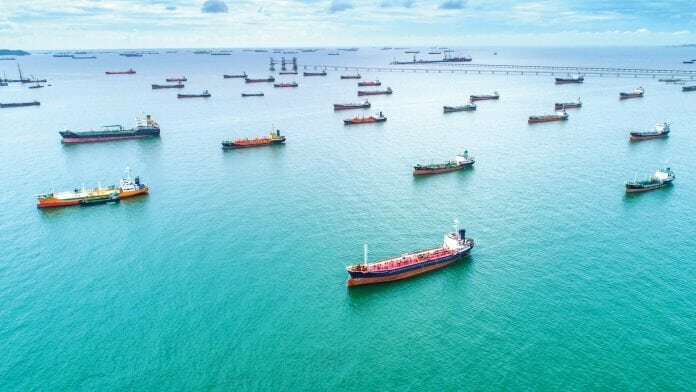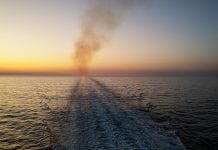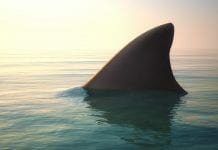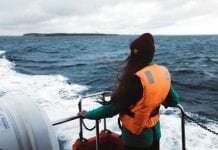
Government Europa explores the international collaborations between key players in the maritime sector in efforts to advance vessels across the globe safely and efficiently.
Intelligent awareness (IA) systems are set to become the next generation of digital technologies to revolutionise the maritime sector, and are expected to enhance safety through the utilisation of sensors, high-resolution displays and intelligent software. In turn, this technology will support other innovations, including the autonomous vessels of the future.
With international players taking part in a range of ongoing research and development activities, the IA systems which will seek to advance the maritime sector are approaching. Here, Government Europa explores a number of key collaborations between players in the maritime sector, through which they hope to revolutionise the safety, communications and autonomy of vessels.
Keeping systems afloat
One such project is being undertaken between Japanese carrier line Mitsui O.S.K. Lines (MOL) and Rolls-Royce’s marine division, who are working collaboratively to develop an intelligent awareness (IA) system on the passenger ferry Sunflower. The project seeks to reduce safety risks, such as ship collisions and groundings during the night.
The IA system will utilise sensor technology, as well as software, to mitigate the risks which navigators face in ever-changing weather conditions, darkness, or in congested waters. Through data collection and information display systems, the IA system is expected to raise the standard of navigational safety as well as operational efficiency. As reported on the Passenger Ship Technology website, Liro Lindborg, general manager of remote and autonomous operations at Rolls Royce, said that the AI system will provide those personnel on the bridge with a more informed understanding of the ship’s surroundings.
“The IA system forms part of our ongoing development of the autonomous ship, but we decided to make the technology available today as it offers real benefits to the existing shipping environment,” Lindborg explained in a March 2018 Rolls Royce press release.
The technology which Rolls-Royce has developed assists ships in their navigation by producing a 3D map of the vessel, based on light detection and ranging (LiDAR), which uses a pulsed laser to measure distance. As a result, an external overview of the vessel’s surroundings can be made, creating “an accurate bird’s eye view of the surrounding area,” Lindborg added.
Furthermore, the IA system encompasses both two and three-dimensional virtual reality, augmented reality (AR) and precision interfacing, supplementing the navigational tools already available from the electronic chart display and information system (ECDIS) and radar. Lindborg said: “We can use the IA system in any ship where there is a need for better situational awareness, particularly during night sailings or in adverse weather conditions.”
Testing the marine technology of the future
Following test trials conducted in April, Director of MOL, Kenta Arai, said: “Sunflower operates in some of the most congested waters in the world and will provide an opportunity to test rigorously Rolls-Royce’s intelligent awareness system.” Offering a night service of over 220 nautical miles between Kobe and O¯ita, Japan, Sunflower travels through Akaski Kaikyo, Bisan Seto and Kurushima Straits, which are believed to be amongst the most congested maritime regions in the world.
The Rolls-Royce IA system is comprised of a tripod of sensors, of which include:
- A camera unit;
- Radar; and
- Inertial navigation system.
Alongside this tripod, the system is powered by other artificial intelligence systems equipment. Lindborg added: “We are collaborating with MOL to get feedback from owners. Sunflower has a challenging route at night, with an oil terminal in the way and fishing vessels and nets during a 12-hour voyage.” Rolls-Royce’s work with intelligent awareness systems was also tested in 2017, in collaboration with Stena line. “We used a tripod plug-and-play unit on ferry Stena Atlantica that operates between Frederikshavn, Germany, and Gothenburg, Sweden. We are having discussions about a fixed installation,” Lindborg explained.
Development for displays on the bridge
In December it was announced that MOL had also signed an agreement with the maritime electronics manufacturer Furuno Electric, also based in Japan, in order to collaboratively develop an information display system using AR technology which will support vessels during journeys.
It is anticipated that the system will assist in the development of autonomous ship operations, providing support via information on the presence of other ships in the vicinity around the vessel, as well as other landmarks and obstacles en route, something which could have a transformative impact on the maritime sector.
Data collected from the automatic identification system (AIS) can be displayed on tablets and other devices, whilst some devices may be able to display images taken from the bridge of the surrounding landscape. Moreover, images will build on AR technology to provide visuals to crew in assisting with surveillance of the ships throughout the voyage.
In a statement, MOL said: “MOL is looking at ways to overlap displays of obstacles taken by radar, adding an obstacle zone by target, which is an algorithm to prevent collisions between vessels, and supplementing displays of obstacles using image recognition technologies to expand such functions.”
A system for the sea
In an agreement between the German-based navigation manufacturer Raytheon Anschütz and Vard Electro AS, an integrate bridge system is set to be developed in India. The integrated navigation system (INS) is planned to consist of six workstations connected via an ethernet-based local area network, which includes:
- Chart radar;
- ECDIS; and
- Conning.
Managing routes and charts, the INS will also share data across the network as well as controlling central tasks and services, including data handling and distribution, system monitoring, alerts and settings.


















